A beautiful creature in the lagoon

Tonight I was happy, because this afternoon I found a beautiful creature, and I am now reading and writing a bit about it, quoting from some writing ever written about it.
Very interesting, because I also read about this creature at a site named: Marine Invertebrates of Bermudaand Dr. James B. Wood was the editor. The author of the article about the creature was Matt Berryman and the article was entitled: Upside-down Jellyfish or Cassiopea xamachana. Yes, that was its name and its scientific name.
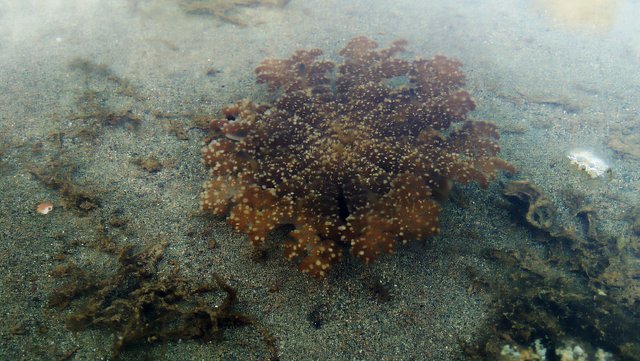
Before some explanation of Upside-down Jellyfish, I was intrigued by Berryman's statement at the end of his writing where he said this:
However, among all the various species, I found the upside-down jellyfish the most fascinating; most likely because it is so unique from other jellies. Cassiopea xamachana spends nearly its whole life upside-down and sitting on the sandy or mud substrate. In this position, the jellies look more like sea flowers than jellyfish; this is a unique form of disguise utilized by this species of jellyfish. (1)

This afternoon, I really saw what Berryman said about this creature, and this has caused excitement in me because I've seen it in Aceh, not in Bermuda. I found it right in a place known as Kuala Giging, east of the city of Banda Aceh, the capital of Aceh in Sumatra.
Well, Berryman explains that xamachana means Jamaican, but even so, Cassiopea xamachana has a fairly wide distribution. These jellies are found through out the Caribbean Sea and warm western Atlantic Ocean and are very common in Bermuda. (2)
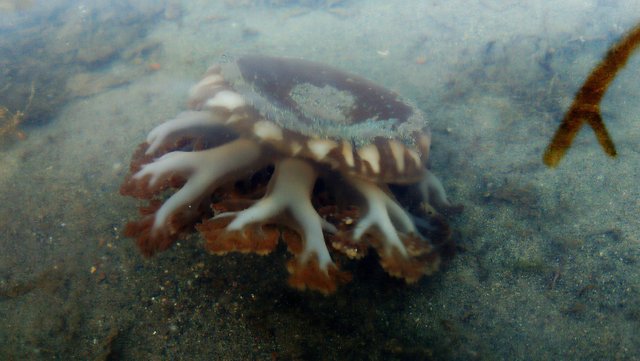
Another source said, Cassiopea xamachana is found in warm parts of the western Atlantic Ocean, the Caribbean Sea and the Gulf of Mexico. It is normally found in large aggregations on the muddy seabed of inshore bays and shallow lagoons. (3).
So one thing I want to underline here, that Cassiopea xamachana is also found here, in Aceh, in a pond, where the water comes from a lagoon.
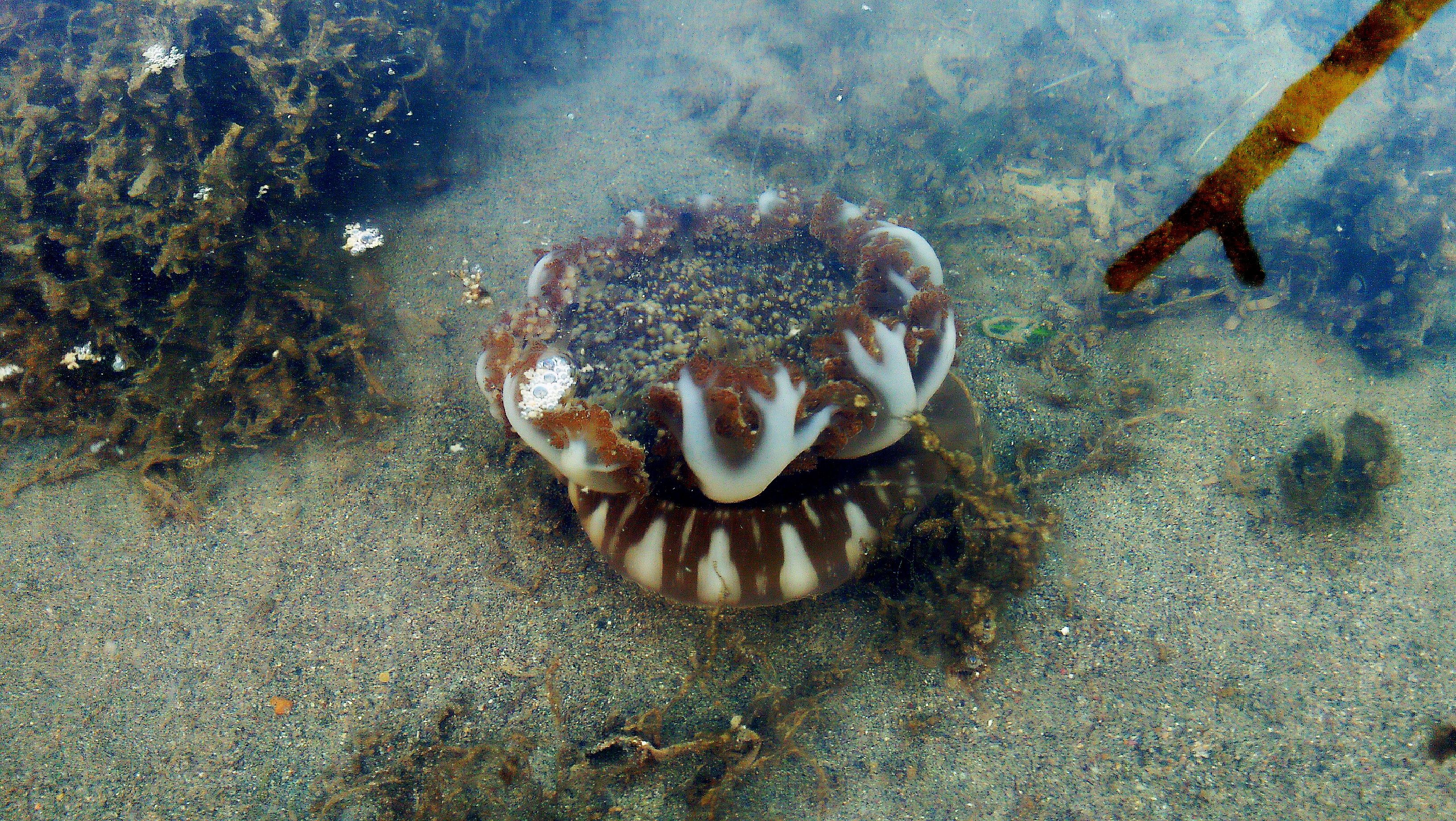
It is commonly known as the upside-down jellyfish because it found laying on the substrate with its bell down and tentacles raised up in the water column. It is also referred to as the mangrove jellyfish. (4)
Many interesting things to know about this creature, but here I want to quote one more thing from the information given by Berryman, which is about the defense of this creature.
Berryman said,
The nematocysts not only function for prey capture, but also serve in the defense of the jelly. When an unlucky predator comes too close to Cassiopea xamachana it sets off the cnidocil and nematocysts are released into the surrounding water. The resulting sting is often enough of a deterrent for most predators, unless they have developed counter-defenses.(5)
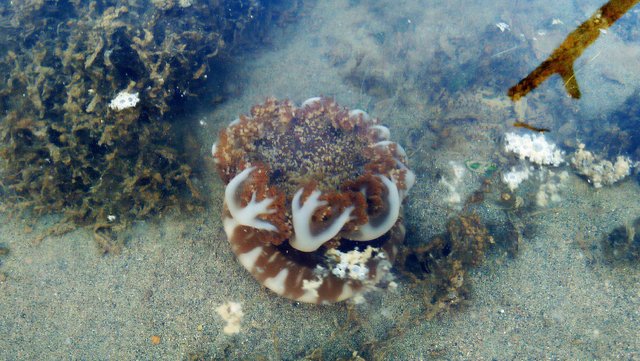
He also added,
As far as humans are concerned, C. xamachana often release their “grenades” into the surrounding waters when disturbed, which can cause an itching sensation on the skin. If significantly disturbed, there is a possibility of a large group of the jellies suddenly launching upward. (6)
About how these animals defend themselves, I think, that is the first important thing to know, then we can be careful when we want to get closer.
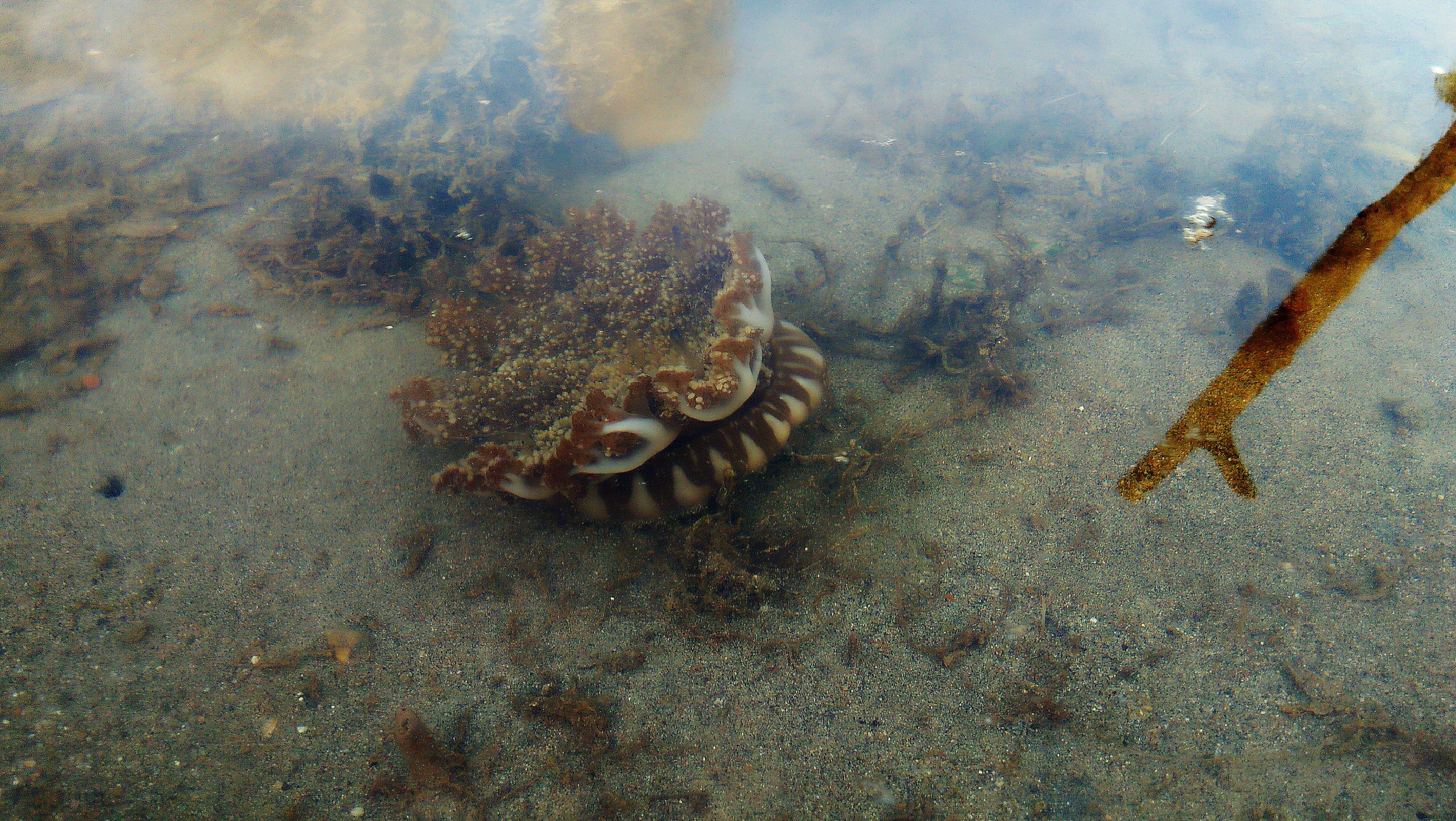
Sources:
Beautiful post aduen @keuudeip
Thank you, @zf90
Jroh that aduen @keuudeip
Nice photos. ;D
Thank you.
Wow, amazing creature!
Thank you, @future24.
Itchy grenade? That's awesome!
It's said so. Thank you.